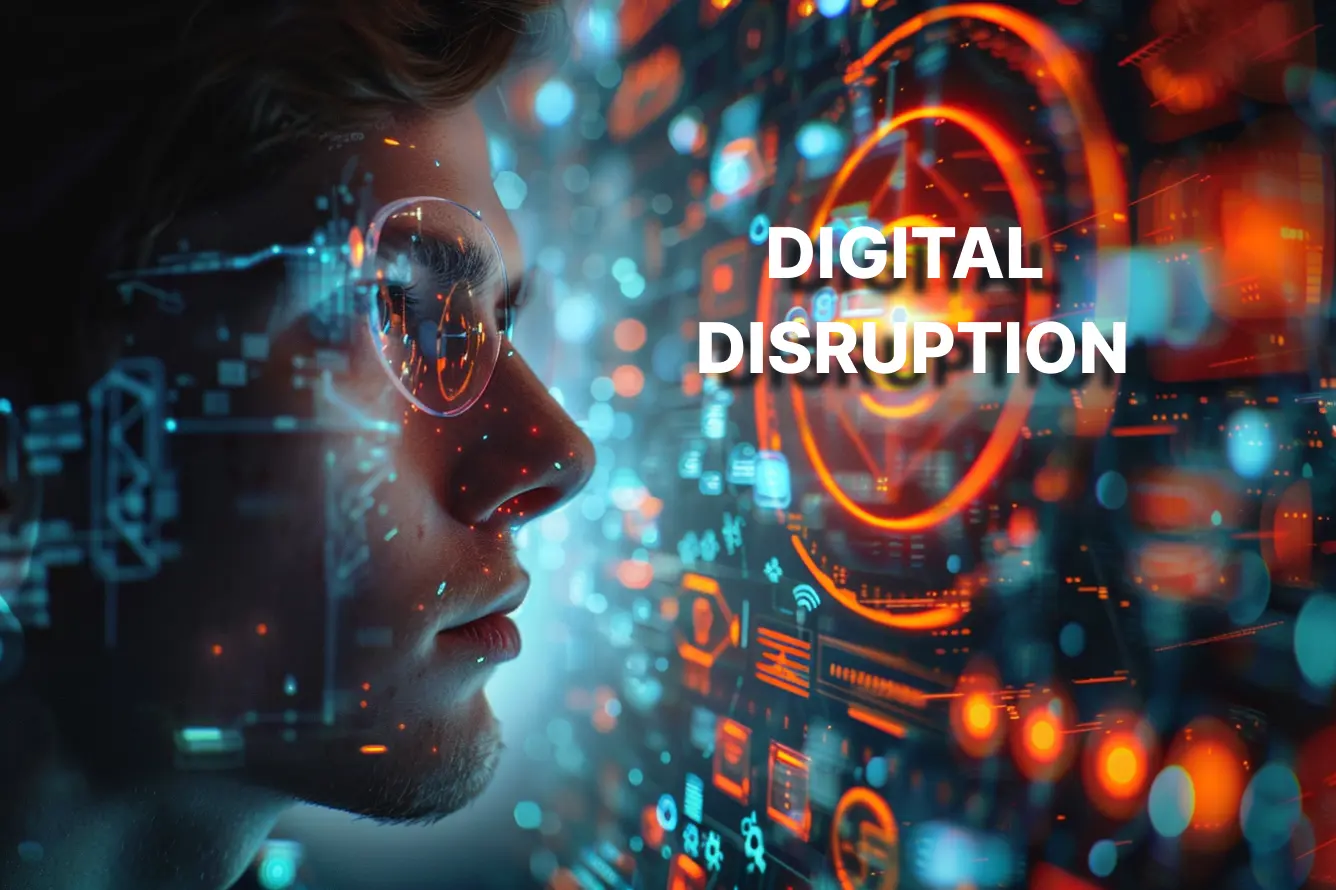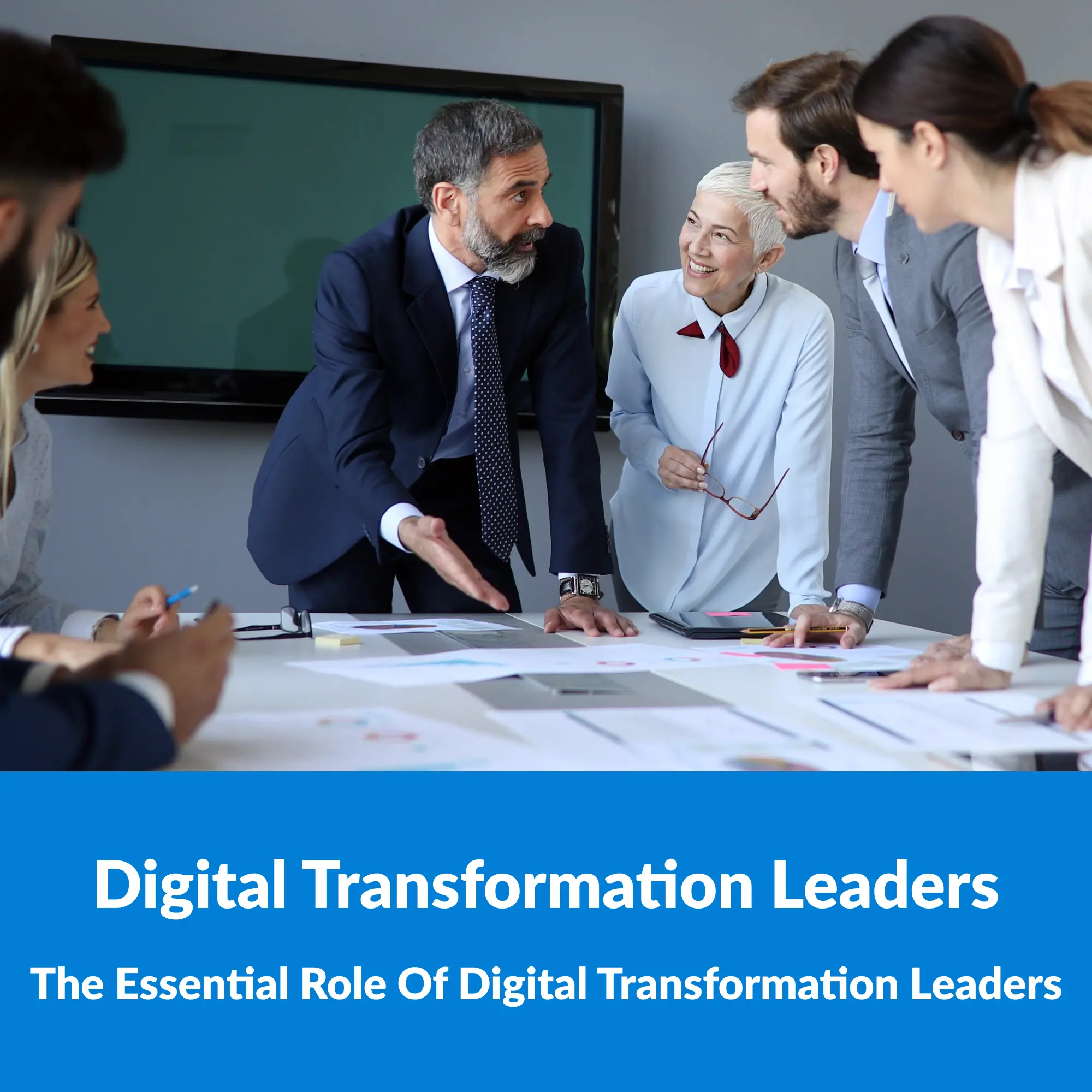Digital disruption, which occurs when a technological innovation destabilizes a business environment, is closely related to digital transformation. The first step toward better understanding is determining the similarities and differences between digital disruption vs digital transformation.
What is Digital Disruption?

Digital disruption is a situation when new technology emerges and competes with the traditional way. New digital products, services, and businesses are influencing the value of the industry’s existing products and services. Currently, digital disruption is happening with cloud computing, machine learning, big data and Internet of Things.
The rapid rise in the use of mobile devices for personal and professional purposes, known as the consumerization of IT, has increased the potential for digital disruption across a wide range of industries.
Numerical breakthroughs will have a negative effect if you choose to ignore them or try to fight them. In contrast, those who know how to seize opportunities can leverage digital disruption to drive business success.

These are some outstanding examples of digital disruption in the last 20 years that create a new technological revolution in their own field and completely changed customer expectations and behaviors. Other typical companies that have successfully leveraged digital disruption to create a leading advantage like: Netflix, Spotify, Uber, Audible,..
What is Digital Transformation?
No company or field is immune to the development of digital transformation, which is why this trend has captured the world’s attention. According to Statista, global spending on digital transformation technologies and services will increase from $0.6 trillion in 2017 to $2.39 trillion in 2024.

Digital Transformation is the process of using digital technologies to create – or adapt existing business processes, culture and customer experiences to meet changing business and customer requirements. It is also a cultural shift that necessitates organizations constantly challenging the status quo, experimenting, and becoming comfortable with failure.
Businesses will apply digital technology to their operations in order to effectively manage the organization and create new values.
For example, converting from cash payment to online payment such as mobile money, e-wallet, QR code scanning,… Applying digital platforms to improve working efficiency, training employees, measuring organization productivity.
What is The Similarity Between Digital Disruption vs Digital Transformation?
Digital disruption and digital transformation are two distinct concepts with different relationships depending on the situation. However, there are some similarities between these two in some extensions.
- Technology is the core: Technology will always play a role in digital disruption vs digital transformation, but the technology itself is not only the primary element. Other factors that should be considered in the innovation would be: business, technology, industry and society.
- Not only for the digital giants: Digital disruption and transformation happen across thousands of small, medium and large companies. Creating a disruptive innovation isn’t just a story for Amazon, Apple, and others. Keep track of and learn from these digital companies. To begin the process of exploiting a disruption or transformation, develop action plans that lead to organizational, cultural, financial, or business model change.
- New approaches to optimizing the customer experience: Consumer behavior shifts as technology becomes more user-friendly. A new app or online service can quickly dominate an existing market. The primary goal of digital transformation and disruption is to improve customer experience, as Amazon, Apple, and many other leaders have pioneered new levels of customer service and experience.
What is The Difference between Digital Disruption vs Digital Transformation?
Digital transformation mainly relates to organizational change; it relates to how organizations transform themselves. Digital disruption, on the other hand, is an outside-in force of transformation or destruction.
Using the analogy of the eggshell, it means the cracking of the eggshell from the inside represents digital transformation, while the cracking from the outside implies digital disruption.
Comparing the steps of the two processes will give you a more intuitive view of the difference.
| Digital Transformation | Digital Disruption | |
| Define the goal | Every company approaches digital transformation differently and expects different results from the process. Your company’s expectations can be determined by analyzing your organization’s current state in terms of strategic gaps, existing technology, day-to-day operational challenges, and current customer expectation and satisfaction rates. | In addition to assessing internal resources, a business’s goals in any digital disruption effort are highly dependent on the actions of its competitors. You need to decide whether your goal is to minimize the risk of competitor breakthroughs or seize the opportunity to become a leader. |
| Analyze | Before embarking on digital transformation initiatives, your company must evaluate factors such as current performance capacity, available financial and human resources, and available technology. | Watch how the competition handles the disruption. Although this move appears to be passive, organizations can gain valuable insight by observing other players. Waiting too long, on the other hand, can have negative consequences such as missed market opportunities and revenue loss. |
| Create and Implement Strategy | Evaluating and rebuilding IT structures, implementing new products using technological advancements, and implementing automation technology to streamline repetitive and time-consuming business processes are just a few of the strategic tactics your company can use to facilitate effective digital transformation. | There are some approaches you can choose based on each specific situation: – Attack: Identify and deal with threats quickly and aggressively. This strategy may include focusing on a specific market segment. – Alternative: Keep an eye on what your competitors are doing and then look for a new market opportunity. This could include looking into completely new or adjacent markets. -Ally: Form a partnership with another company or create an ecosystem. This could include an external vendor who adds a new capability to the organization or assists in increasing market share. |
Which is Suitable for The Company?
Digital disruption and transformation aren’t something to combat. As the world transitions from atoms to bits, digital transformation and disruption are inevitable and increasingly driven by economic, societal, and regulatory considerations.
There doesn’t appear to be a best option for your business, therefore you should be ready for either one. The process and level may depend on many factors: company’s resources, market needs, customer expectations as well as industry properties. An excellent tool for this is the SWOT analysis, which evaluates Strengths, Weaknesses, Opportunities, and Threats.
Your company’s capacity to respond to asymmetric competition depends on its strengths and shortcomings (i.e. those who are traditionally not your immediate competitors). Agile companies excel in this area because they are arguably better able to adjust to disruptive issues as they materialize.
Digital communications and technology now have a big impact on both opportunities and challenges facing the organization. However, how much of a threat or opportunity digital technology poses to your organization will largely depend on how prepared it is to handle the difficulties of the digital age.
Conclusion
While still in its early stages of development, digital disruption vs digital transformation represent the next big thing in customer experience and, ultimately, how business is conducted. Companies that “get it” and put more money into learning about the interests and expectations of their digital customers will have a considerable competitive edge over those that catch on later.





